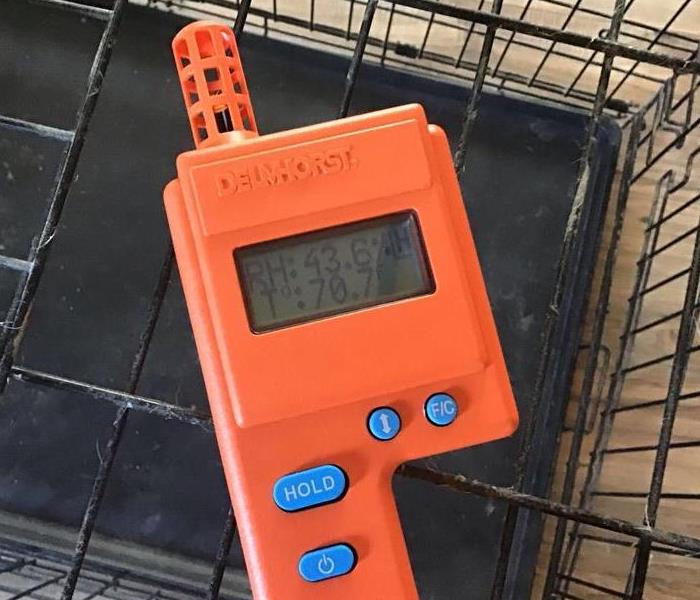The Importance of Atmospheric Readings on Water Damages
1/14/2019 (Permalink)
Have you ever wondered how our technicians know if your property is still wet? On the first visit there is often standing water that needs to be extracted and building materials are visibly wet. Often after the first day the building materials no longer look wet but are still retaining moisture. With the air, it is even more difficult to tell how much moisture is in it because you cannot see it.
Our technicians use thermohydrometers to test the amount of water in the air at a given temperature. This is the Relative Humidity. They also check to see what temperature the air is. Those two numbers can be used to calculate the grains, or actual amount of water in the air. The grains let us compare two different quantities of air to determine which has more water in it. Our dehumidifiers work by removing water from the air, and taking atmospheric readings lets us not only check to see if they are working properly but how well they are working. We also compare the grains of water in the affected area to an unaffected area. Once the grains in the affected area are at or below the grains of an unaffected area, we know that the air is dry!
It is important to know that the air is dry so that there is no secondary damage from condensation or high humidity, both of which can lead to microbial growth.






 24/7 Emergency Service
24/7 Emergency Service
